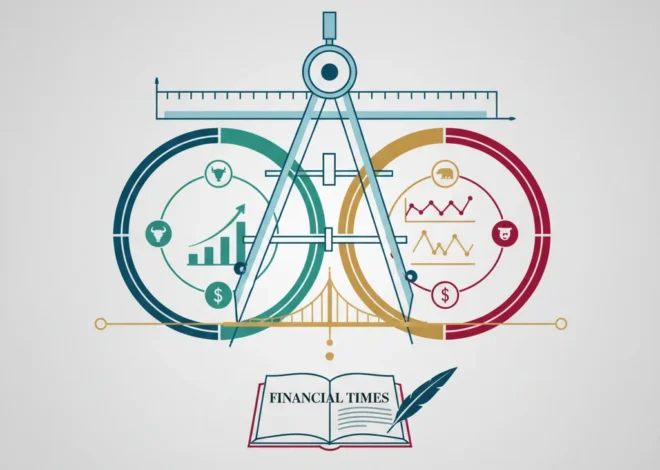
Beyond the Barrel: Deconstructing the Global Oil Surplus and Its Economic Ripple Effects
The global oil market, often seen as the lifeblood of the world’s economy, is a complex and volatile arena. In a dramatic turn of events, the price of Brent crude, the international benchmark, recently tumbled to a five-month low, sending shockwaves through the financial world. The catalyst for this sharp decline was a report from the International Energy Agency (IEA) highlighting a “large surplus” of oil, evidenced by a significant build-up in global shipments. This wasn’t just a minor fluctuation; it was a move that wiped out gains accrued over months of geopolitical tension and production cuts.
But what does this news truly signify? Is it a simple case of supply overwhelming demand, or is it a canary in the coal mine, signaling deeper troubles within the global economy? For investors, business leaders, and anyone with a stake in the world of finance, understanding the intricate forces behind this price plunge is crucial. This deep dive will unpack the IEA’s findings, explore the macroeconomic headwinds, and analyze the profound implications for the stock market, investing strategies, and the future of energy.
The Catalyst: Unpacking the IEA’s “Surplus” Bombshell
At the heart of the market’s sudden downturn is the latest report from the International Energy Agency, a Paris-based organization that provides authoritative analysis on the global energy sector. The IEA’s declaration of a “large surplus” was the key trigger. According to the Financial Times, Brent crude fell as much as 3% on the news, a significant single-day move in commodity trading (source). But what does this “surplus” actually mean?
In the language of economics, a surplus occurs when the supply of a commodity exceeds the demand for it. The IEA observed a recent, sharp build-up in oil held on tankers, suggesting that more oil is being produced and shipped than is being consumed. This excess supply puts downward pressure on prices, as sellers must compete more aggressively to find buyers. This situation is a stark reversal from earlier in the year when fears of supply shortages, driven by OPEC+ production cuts and geopolitical risks, had pushed prices higher.
The market’s reaction was swift and decisive. Traders and algorithms, powered by sophisticated financial technology, immediately priced in this new supply data, leading to a sell-off in oil futures. This highlights the sensitivity of modern markets to key data releases, where a single report can reshape the entire landscape of commodity investing in a matter of hours.
Macroeconomic Headwinds: The Demand Side of the Equation
While the IEA report focused on the supply side, the story of oil’s decline is equally rooted in growing concerns about global demand. A surplus is only a surplus relative to consumption, and evidence is mounting that the world’s appetite for energy is waning. Several macroeconomic factors are contributing to this trend:
- Aggressive Central Bank Policies: Central banks around the world, particularly the U.S. Federal Reserve and the European Central Bank, have been raising interest rates to combat inflation. This core function of banking policy is designed to slow down economic activity. Higher borrowing costs discourage business investment and consumer spending, leading to reduced manufacturing, less travel, and ultimately, lower demand for oil and other energy sources.
- Slowing Growth in Key Economies: Economic data from major consumer nations has been less than stellar. China’s post-pandemic recovery has been sputtering, hampered by a property crisis and weak consumer confidence. In Europe, manufacturing sectors in powerhouse economies like Germany are contracting. When these economic engines slow, their fuel requirements naturally decrease.
- A Strong U.S. Dollar: Because oil is priced in U.S. dollars, a stronger dollar makes it more expensive for countries using other currencies to purchase crude. The Federal Reserve’s hawkish stance has strengthened the dollar, effectively creating an additional headwind for global oil demand.
These factors create a powerful narrative of a slowing global economy, a narrative that has become the dominant driver of oil prices, overshadowing even significant supply-side events like conflicts in the Middle East.
The Complex Dynamics of Global Oil Supply
It’s crucial to remember that the market is influenced by both supply and demand. Even with weakening demand, supply-side factors remain incredibly important. The Organization of the Petroleum Exporting Countries and its allies, known as OPEC+, have been actively trying to support prices by cutting production. However, the effectiveness of these cuts is being challenged.
The table below summarizes the key bearish (price-negative) and bullish (price-positive) forces currently at play in the oil market, offering a balanced view of the complex dynamics investors must navigate.
| Bearish Factors (Pushing Prices Down) | Bullish Factors (Pushing Prices Up) |
|---|---|
| IEA report of a “large surplus” in shipments (source) | Ongoing production cuts by OPEC+ nations |
| Fears of a global economic recession | Persistent geopolitical risks in the Middle East |
| Weak economic data from China and Europe | Low strategic petroleum reserves in the U.S. |
| High interest rates from central banks | Potential for a future economic “soft landing” |
| Strong U.S. dollar making oil expensive | Underinvestment in new oil exploration projects |
Furthermore, non-OPEC supply, particularly from the United States, Guyana, and Brazil, has been more robust than expected. This resilient production outside of the cartel’s control is partially offsetting the deliberate cuts made by Saudi Arabia and Russia, adding to the surplus and complicating the efforts of OPEC+ to manage the market.
Implications Across the Financial Spectrum
A significant and sustained drop in oil prices creates a cascade of ripple effects across the entire financial ecosystem. Understanding these implications is key for strategic decision-making.
For Investors and the Stock Market:
Lower oil prices are a double-edged sword for the stock market. On one hand, they are a direct hit to the profitability of energy companies, likely leading to underperformance in the energy sector (e.g., stocks like ExxonMobil, Chevron, and Shell). On the other hand, lower energy costs are a boon for other industries. Airlines, transportation companies, and heavy manufacturing firms see their input costs decrease, which can boost profit margins and support their stock prices. For the broader market, lower oil prices can act as a disinflationary force, potentially giving central banks room to ease up on interest rate hikes, which is generally seen as positive for equities.
For Businesses and Global Trade:
For businesses, the primary benefit is reduced operational costs. Lower fuel prices for shipping and transportation can ease supply chain pressures. Manufacturing processes that are energy-intensive become cheaper, potentially leading to lower prices for consumers. However, for oil-exporting nations, the drop in prices means a significant reduction in national revenue, which can lead to government budget deficits and reduced public spending.
For Consumers and Banking:
The most direct impact for the general public is at the gas pump. Lower crude prices eventually translate to cheaper gasoline, providing consumers with more disposable income. This can help alleviate cost-of-living pressures and is a tangible benefit of the market downturn. From a banking perspective, this relief can help improve household balance sheets and potentially reduce loan default rates on consumer credit.
Looking Ahead: Navigating an Uncertain Market
The recent plunge in oil prices, sparked by the IEA’s report of a large surplus, is more than just a headline—it’s a reflection of the deep anxieties surrounding the health of the global economy. The market is currently weighing the tangible evidence of a supply glut against the ongoing efforts of OPEC+ to tighten the market and the ever-present geopolitical wild cards.
For now, the bears are in control, with macroeconomic fears firmly in the driver’s seat. Investors and business leaders must remain vigilant, monitoring key economic indicators from major economies, upcoming announcements from OPEC+, and further analysis from agencies like the IEA. While the future remains uncertain, one thing is clear: the intricate dance between supply, demand, and global finance will continue to make the oil market one of the most dynamic and crucial arenas to watch in the world.


